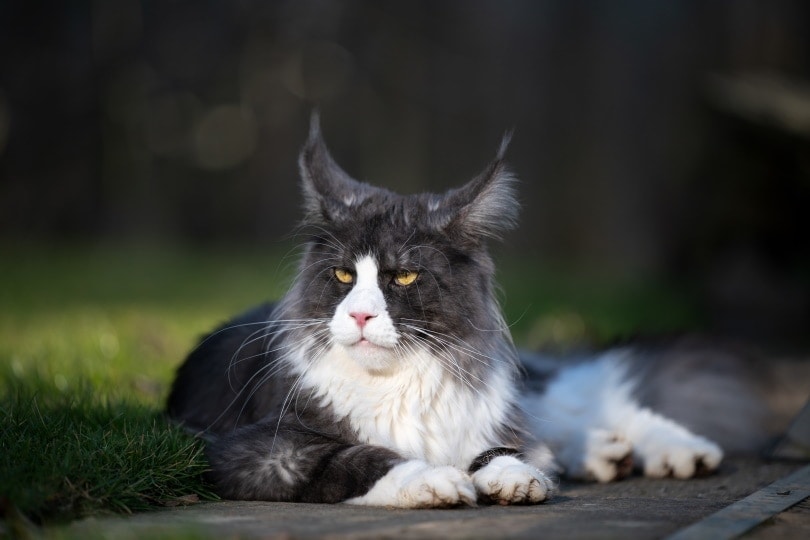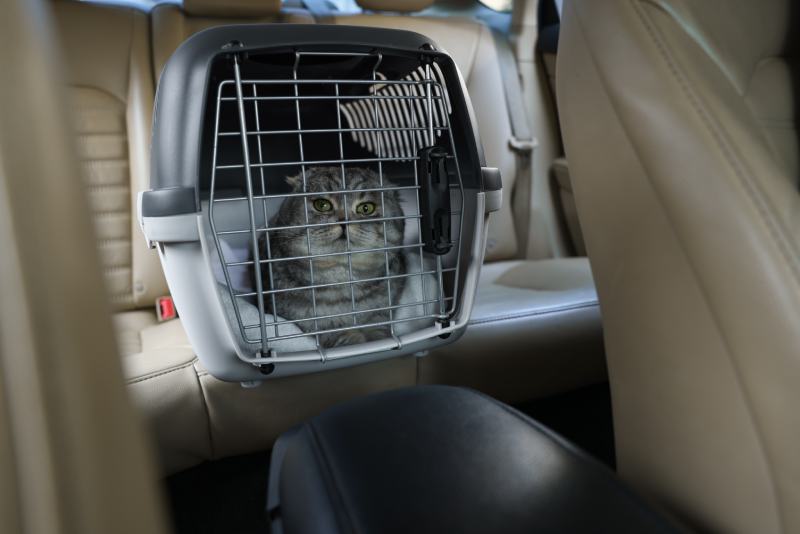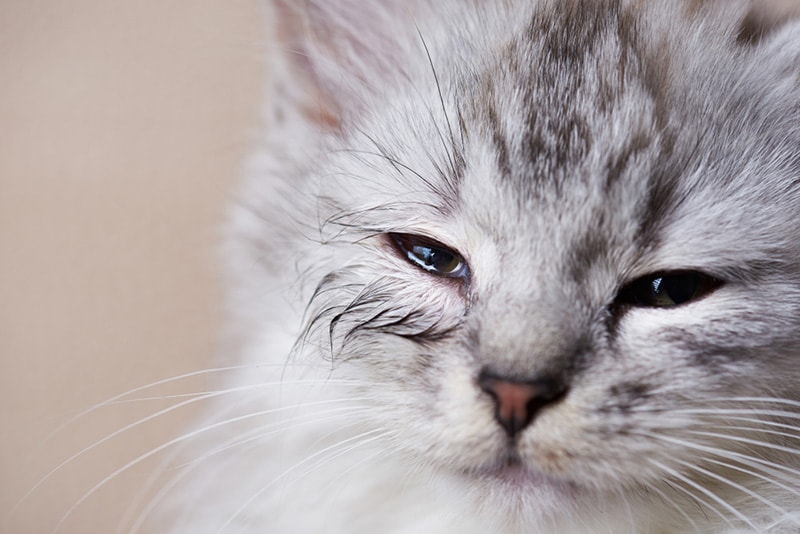6 Abyssinian Cat Colors & Patterns (With Pictures)

Updated on
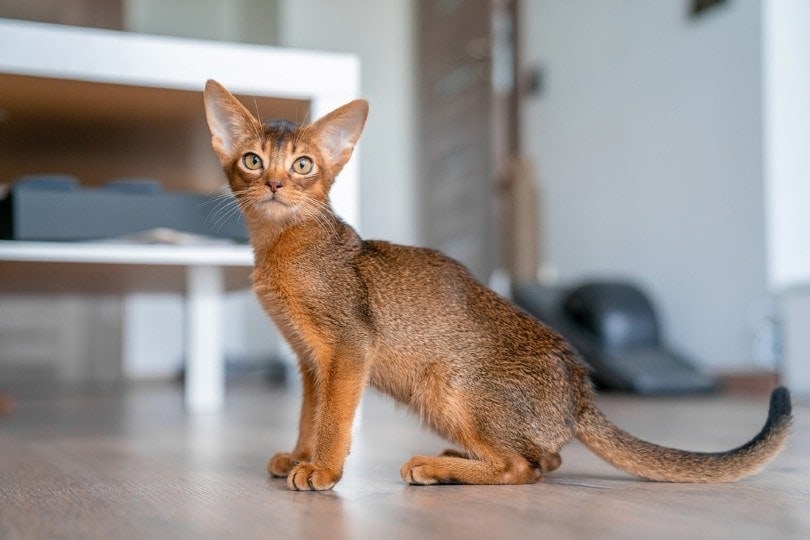
Abyssinian cats are gorgeous felines that make extraordinary pets. Their sleek muscular bodies are set off by thin legs that seem to go on for miles. They’re moderately sized, weigh between 8 and 10 pounds, have slightly triangular heads, have green or golden eyes, and large ears. Most also have a dark M marking on their foreheads as well.
They have ticked coats that feel silky to the touch and usually feature several shades on each strand of fur. The Cat Fanciers’ Association (CFA) recognizes four coat colors: ruddy, cinnamon, blue, and fawn, but Abyssinian cats can have a wide variety of colors and patterns. Keep reading to learn more about them.
The 6 Abyssinian Cat Colors & Patterns
1. Ruddy
Abyssinian cats with ruddy coats have brownish fur and deep orange highlights featuring brown and black ticking. They also have black-tipped tails and adorable black or brown toe pads.
Their red noses draw everything together and complete the elegant look. Ruddy is one of the shades recognized by the CFA. It’s also called tawny and is one of the colors most associated with the breed. The coat color is sometimes referred to simply as “usual.”
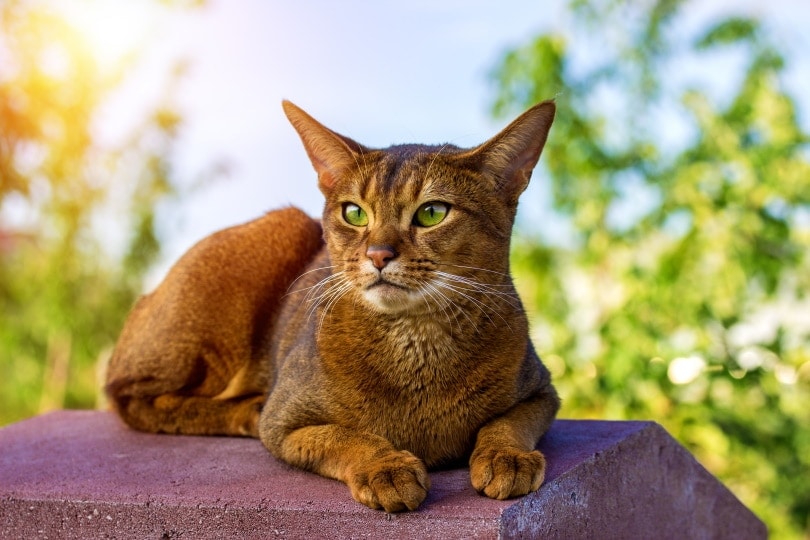
2. Cinnamon
Cats with cinnamon-colored coats have deep reddish-brown fur with brown ticking. Their tails end in rich, dark brown splashes of color, and most have pink noses and paw pads to match, but bits of brown sometimes peek out from between their toes. Their medium-length fur usually has about two or three rounds of ticking, and they have the same undercoat shades on their backs, sides, and chests.
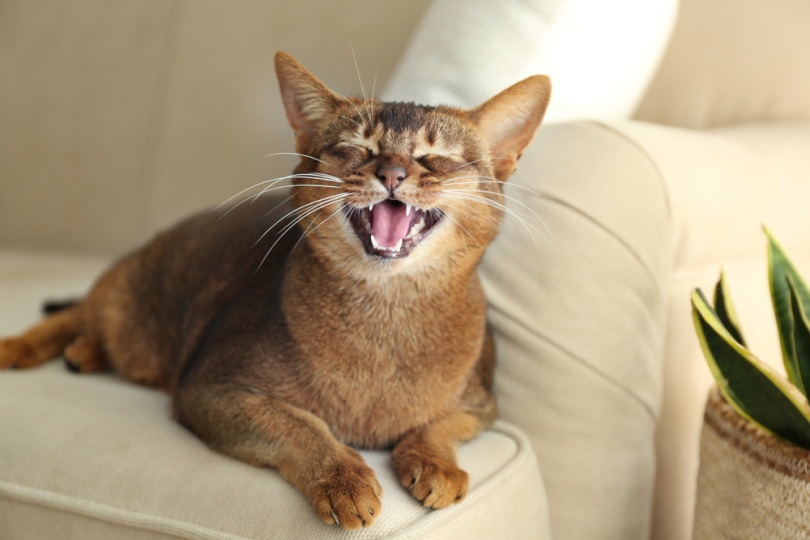
3. Blue
Blue Abyssinian cats generally have soft beige or gray colored fur that’s set off by blue ticking, but they generally look like gorgeous shimmery, light gray cats! Blue Abyssinian cats often have rose-colored noses and mauve paw pads.
A bit of slate blue can usually be seen between their toes. Some have slightly darker hair along their spines. Their bellies, sides, and the insides of their legs usually share the same undercoat color.
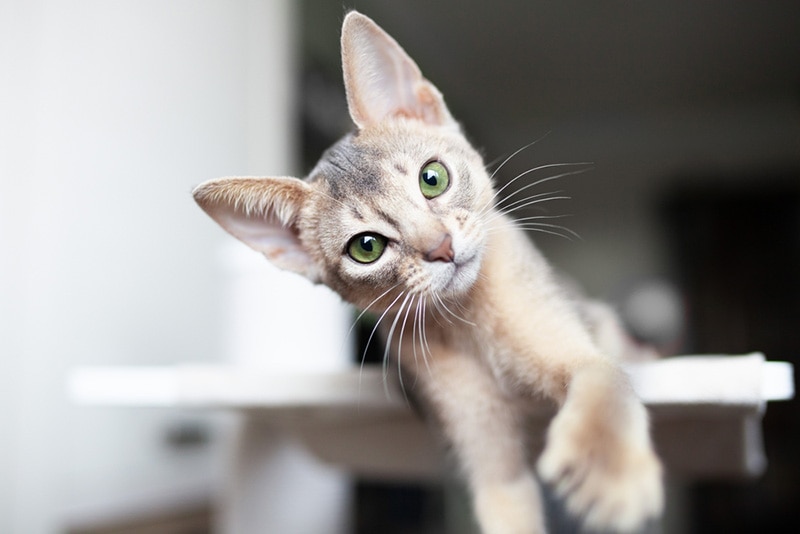
4. Fawn
Fawn-colored Abyssinian cats generally have rosy beige coats with light-brown ticking. They have pink noses and pink paw pads featuring pinkish-brown areas between the toes.
Their coats often have a shimmery appearance, and fawn is one of the rarest colors officially recognized by the CFA. The Grand Council of the Cat Fancy (GCCF) describes fawn Abysinnian cats as having cream, almost beige undercoats, dark fawn ticking, and pink paw pads.
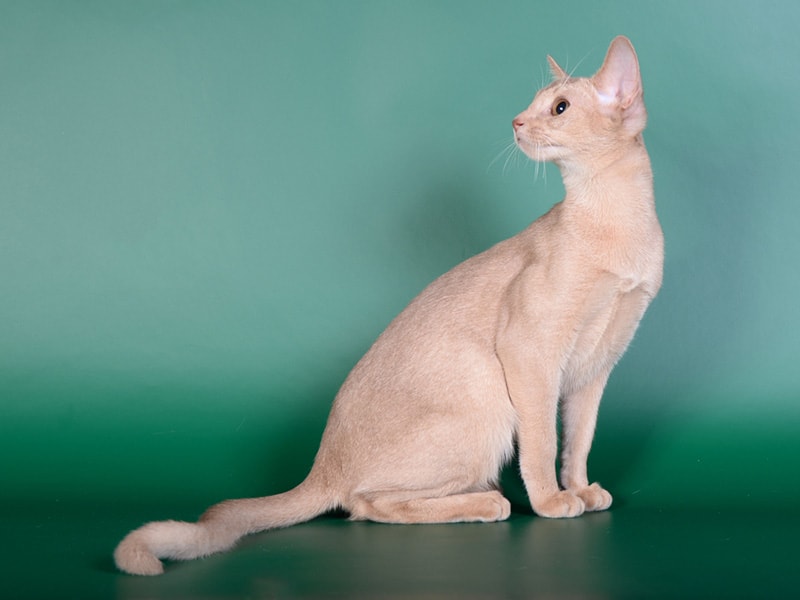
5. Chocolate
The CFA doesn’t recognize Chocolate Abyssinian cats, but they are recognized by The International Cat Association (TICA). They have deep coppery coats that are set off by chocolate ticking.
Their undercoats are often a gorgeous shade of apricot, and they have brownish-pink noses and dark paw pads. The first chocolate Abyssinian kittens made it to the US in the 2000s. Most cats with the coat color are descended from a cat named Arboreal Chocolate Katrina.
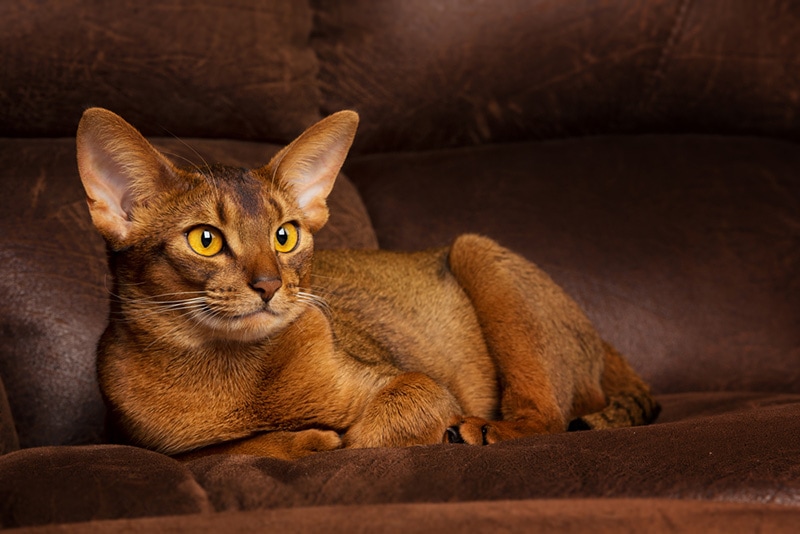
6. Usual Silver
These gorgeous cats typically have light silvery base coats set off by black ticking. Most have red noses and black paw pads to add a bit of flair. The GCCF also recognizes colors such as blue silver, chocolate silver, and sorrel silver.
The coat’s ticking is related to a gene that masks an underlying tabby pattern. Abyssinian cats’ hairs often look translucent, which adds to their coats’ sparking and shimmery appearance.
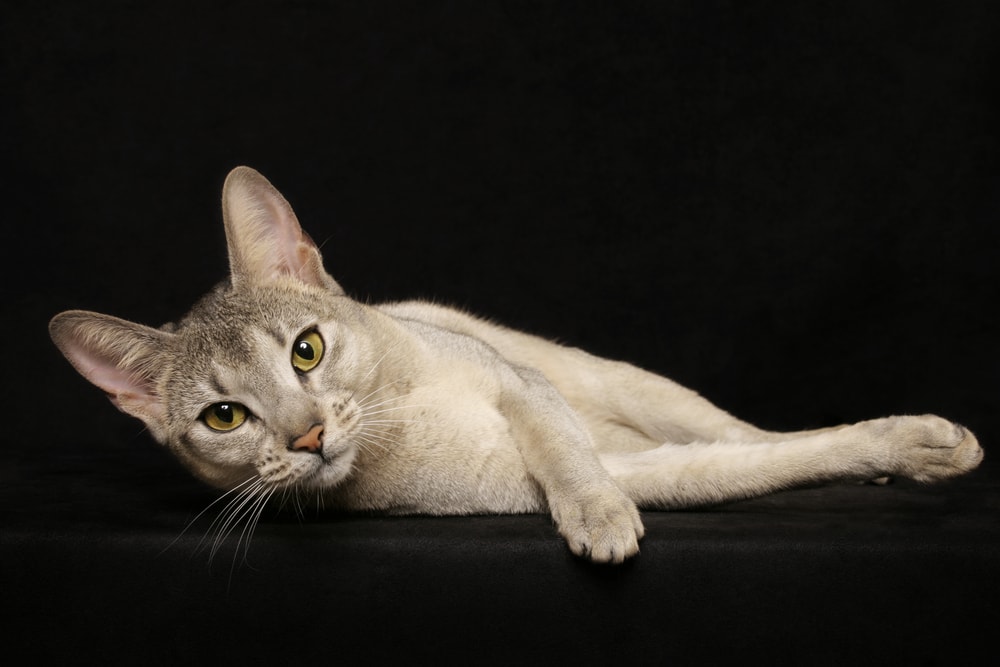
FAQ
Where do Abyssinian cats come from?
Ancient Egyptian art contains depictions of cats that strongly resemble Abyssinian cats, but they may actually be descended from cats native to Southeast Asia and areas around the Indian Ocean.
What type of personalities do Abyssinian cats have?
Abyssinian cats are always interested in spending time with their favorite people and can get along with well-behaved dogs well. Many don’t enjoy spending long periods alone. They’re typically quite bright and are known for being able to open drawers and doors.
Some can even turn on lights when left to their own devices. Most Abyssinians are energetic, and they’re able to jump extraordinary distances! Providing these smart, curious cats with sufficient exercise, attention, and mental stimulation is critical to keeping them happy, healthy, and out of trouble.
Do Abyssinian cats require any special care?
Weekly brushing is usually enough to keep their coats looking good. They generally love spending time in high places, so many cat shelves and trees can help them feel at home. As a breed, they have a tendency to develop dental problems, so regular dental care and tooth brushing are essential to keeping them healthy.
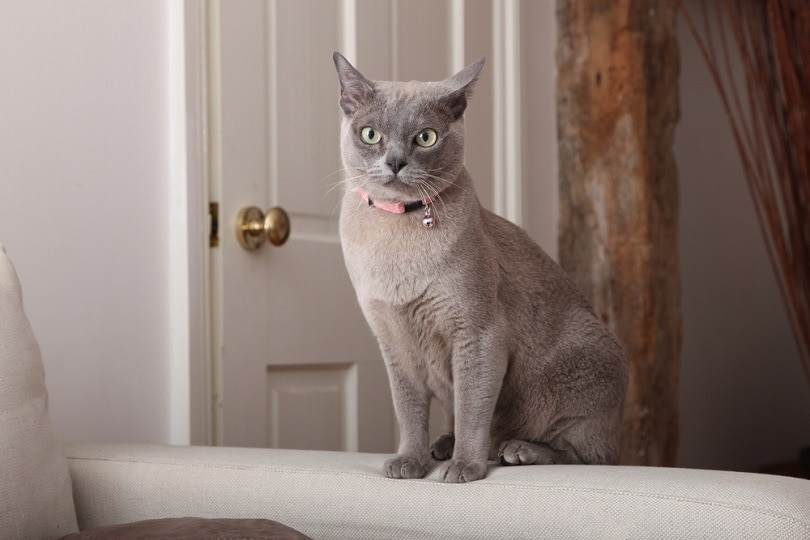
Conclusion
Abyssinian cats come in several colors, shades, and patterns. The CFA only recognizes ruddy, cinnamon, blue, and fawn coat colors. The GCCF and TICA accept a larger range of colors and patterns.
Ruddy is the color most often associated with these beautiful cats. Abyssinian cats of all colors generally have ticked coats, and their hairs are darker towards the tips and lighter closer to their bodies. Their intelligence, affectionate nature, and general antics make them popular as beloved companions.
See also:
- 120 Awesome Names for Abyssinian Cats: Ideas for Unique Felines
- How Big Do Abyssinian Cats Get? Vet-Reviewed Average Weight & Growth Chart
Featured Image Credit: Ingus Kruklitis, Shutterstock


